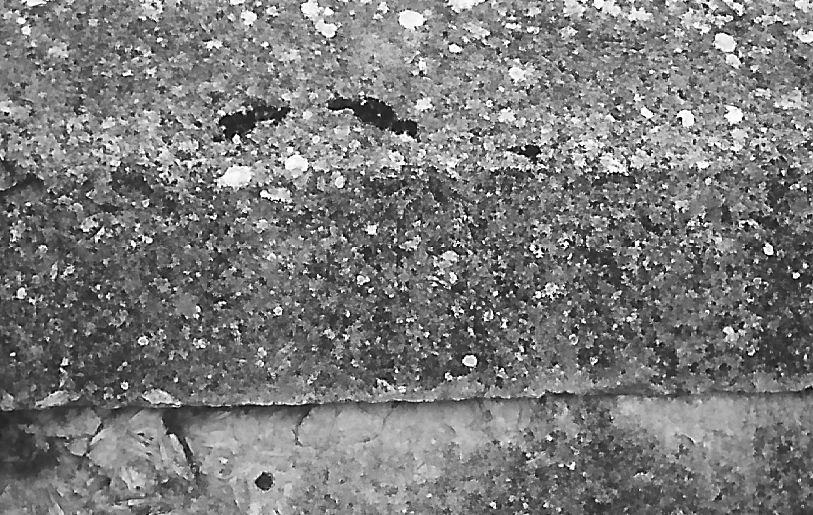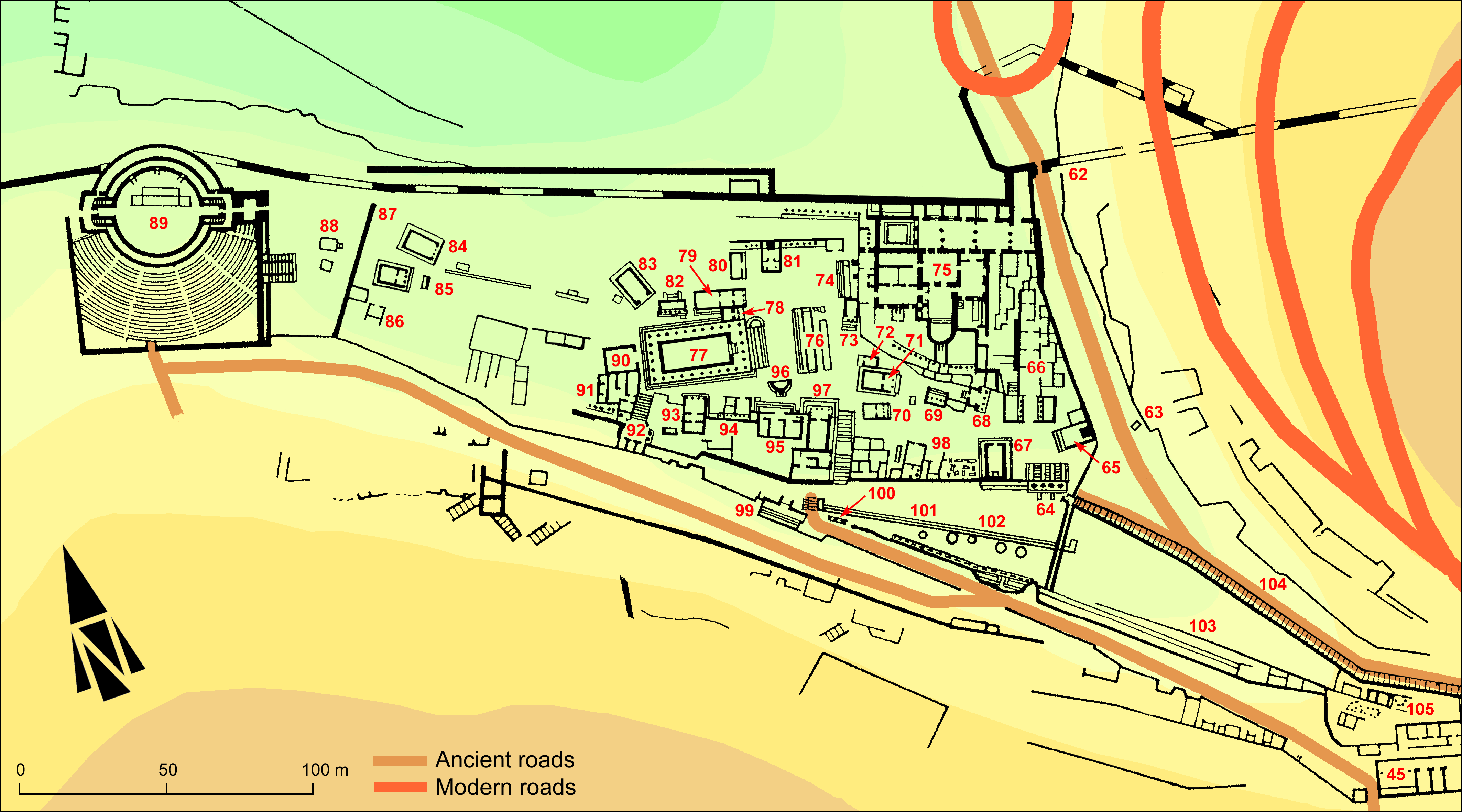EpiDoc XML:
IGCyr0805002
Trismegistos ID:
738380
Source description
Support: Low limestone wall with coping head-blocks and, below, on its Northern side, a bench for visitors (width 1.38 to 1.80 for each block).
Layout: One letter inscribed on the Northern side of each head-block; six non inscribed blocks at the right end and probably six also, now missing, at the left end, now hidden under a water channel of Byzantine date.
Letters: 0.1; slight serifs, mu and sigma with four slantering strokes, open omega, epsilon with shorter middle bar.
Date: About 300 BC (Rosamilia) (lettering).
Findspot: Cleared in 1930 by G. Oliverio at Cyrene ➚: Sanctuary of Apollo, Fountain Terrace, Bench of Elaiitas.
Place of origin: Findspot.
Last recorded location: Seen by C. Dobias-Lalou in 1977 and often again in situ, in the Sanctuary of Apollo.
Text constituted from: Transcription from stone (CDL).
Bibliography
Stucchi 1975, p. 113, n. 6, and Laronde 1987, pp. 189-190, whence SEG, 38.1897; IGCyr 080500 ➚; Rosamilia 2023, p. 102, p; 367, number 92 (text). Cf. Ensoli Vittozzi 1996, p. 94; Ensoli 1997; Rosamilia 2018, pp. 277-280, whence SEG 68.1750.
Text
Apparatus
1: [Θευδώρ?]ω: [c. 6]ω IGCyr; [Θευδώρ]ω Stucchi 1975, Rosamilia 2018, Rosamilia 2023
French translation
Elaiitas fils de [Theudor?]os durant sa prêtrise a consacré à Apollon.
English translation
Elaiitas son of [Theudor?]os being priest dedicated to Apollo.
Italian translation
Elaiitas figlio di [Theudor?]os ha dedicato ad Apollo quando era sacerdote.
Commentary
Stucchi's restoration for the father's name was based on IGCyr0967002, which is clearly much later. We followed thus already for IGCyr Laronde's dating and consider the two Elaiitas to be different persons of different times. Hence a date for the wall-bench that should be older than proposed by Stucchi and Ensoli. However, the latter's research in the area proved that the wall-bench was built after the Greek propylaea. Rosamilia 2018 (and again Rosamilia 2023), being able to date IGCyr0967002 about 250, tries to reconcile all arguments and allows for two generations separating the two men named Elaiitas. By the way, he regenerates Stucchi's restoration of the present inscription, supposing that the two names Elaiitas (a rare one) and Theudoros (a very common one) were given alternatively in the family. This point should be taken cautiously as a tempting hypothesis, for many other names ending with ος may fill the gap of six letters.
Laronde mentioned also en passant a possible restoration of the priest's name as Ἐπαρίτας; this is a relic of a former stage of his work that he omitted to cancel in his publication, but rejected firmly in further oral discussion and in his unpublished prosopography, inasmuch as IGCyr1020002 now offers a third instance of the rare name Ἐλαιίτας.
By the time of the discovery, Oliverio thought this wall to be a dam protecting the sanctuary from rain-water (see for example Luni 2014, p. 133). Laronde provided arguments against this idea and Ensoli Vittozzi 1996, p. 94 (cf. Ensoli 1997) eventually considered it as a bench for visitors, namely for people taking part into the sacred processions.
CC BY-NC-SA 4.0 Deed Attribution-NonCommercial-ShareAlike 4.0 International License.
All citation, reuse or distribution of this work must contain a link back to DOI: https://doi.org/10.60760/unibo/igcyrgvcyr2 and the filename (IGCyr000000 or GVCyr000), as well as the year of consultation.




